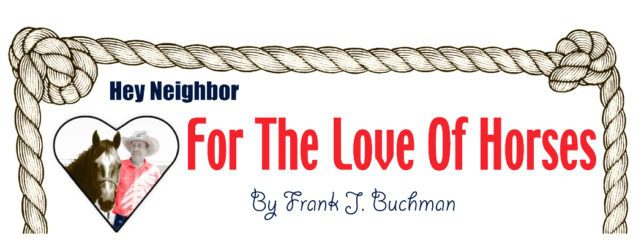Economic turmoil and a ban on horse slaughter has resulted in a steadily growing number of unwanted horses with owners who are unable to properly care for them.
“The unwanted horse population has risen as the cost of purchasing a horse has dropped, but the cost of keeping a horse has stayed the same,” emphasized Dr. Alison M. LaCarrubba heads the equine ambulatory section at the University of Missouri-Columbia College of Veterinary Medicine.
It costs about $60 per month to feed a horse hay and grain, LaCarrubba said, depending on pasture availability. With regular veterinary costs for hoof trimming, deworming, vaccinations, and dental work, combined with the costs for fencing and shelter, the price to keep a horse adds up quickly, to as much as $15,000 per year.
“It’s a supply and demand issue,” LaCarrubba evaluated. “It used to be that you could buy an entry-level horse at auction for about $700, but now you can buy that same horse for $50.
“It is still expensive to feed and keep a horse, however, and there aren’t a lot of options when that cost becomes too great,” LaCarrubba continued. “We’re seeing more and more horses that are not getting enough to eat, and we have been looking for solutions to the problem.”
Compounding recent economic woes, horse slaughterhouses have been closed in the United Statessince 2007, leaving many horse owners without an affordable euthanasia option for their animals.
Equine veterinarians concerned with the situation are attempting new efforts to control the horse population in the United States. One increasingly popular approach is low- or no-cost castration clinics.
The impetus for these clinics is to help prevent over breeding and produce a gentler horse that is more rideable, more trainable, and more salable, allowing it to be used in several careers. The clinics also reduce the number of horses being bred and aid in the adoption or sale of more horses.
Missouri’s veterinary college had its first castration clinic this month at the university’s farm. Stallions were referred by area veterinarians or equine rescue organizations; students assisted with the procedures and gained experience in the
process.
Missouri modeled its effort after The Gelding Project in Minnesota. Developed by a coalition of state welfare and equine organizations, The Gelding Project launched in
2009.
The first aspect of the two-part project, Education Earns Stallions to Geldings, encouraged horse owners, through education and financial incentives, to choose to turn their stallions into geldings.
Those enrolled in the program were eligible for a voucher to cover the cost of castration surgery once the owner attends eight horse health management educational sessions.
The second aspect of the project involves conducting castration clinics. The Minnesota Horse Council certified horse rescue organizations on the basis of their compliance with the American Association of Equine Practitioners’ published guidelines for such facilities.
These certified organizations brought colts and stallions for one day, for free gelding. Again, the procedures were performed by veterinary students under the supervision of area veterinarians.
Individuals who qualified to bring a horse to the clinic were from certified equine rescue groups or were stallion owners who couldn’t afford the cost of gelding and had been invited to participate by their veterinarian or referred by the Animal Humane Society Humane Investigations team.
“We have tried to move the clinics around the metro area to accommodate all that we can,” said Dr. Tracy A. Turner, president of the Minnesota Association of Equine Practitioners. “We have averaged 20 horses per clinic. We could not be happier with the program, not only from the unwanted horse standpoint, but also the students are
getting unprecedented and valuable experience.”
A similar effort has begun on the national level as well. The Unwanted Horse Coalition announced the creation of Operation Gelding.
The program will provide funds and materials to assist organizations, associations, and events that wish to sponsor clinics where horse owners may bring their stallions to be castrated.
The UHC, along with the AAEP Foundation, donated seed money to get the program started. They provide information and forms necessary to conduct a clinic.
Fifty dollars per horse gelded with a $1,000 maximum will be awarded to groups once a year. Assistance will be awarded on a first-come, first-served basis, subject to available resources.
Organizations can apply by filling out the Operation Gelding funding form provided by the UHC. Money will be awarded once the clinic is complete and a veterinary statement is provided. Any organization, association, or event can participate in the
program.
Information about Operation Gelding is available from UHC director Ericka Caslin at ecaslin@horsecouncil.org, or by call 202-296-4031. Details about Missouri castration clinics is available from the college’s development office at 573-882-1902.
+++
